- About Us
- Columns
- Letters
- Cartoons
- The Udder Limits
- Archives
- Ezy Reading Archive
- 2024 Cud Archives
- 2023 Cud Archives
- 2022 Cud Archives
- 2021 Cud Archives
- 2020 Cud Archives
- 2015-2019
- 2010-2014
- 2004-2009
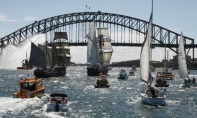 |
Of Ellroy, Roth, McCabe & Carey On Oz Day... |
January 26, Paddington.
As I sit here in the Sydney heat -I am told that it is really the humidity- generating a lather of sweat simply typing, people are out and about everybloodywhere, doing what they think they should be doing on what is allegedly our National Day. There has developed in the last decade or two a suite of “traditional pursuits” on Australia Day but for someone who is self-employed a public holiday is a meaningless nuisance, this one more than others as one struggles to park at one’s own beach. In any case I have not tattooed (temporarily or permanently) the constellation of the Southern Cross on any part of my person. I have not donned any flags. I have not (yet, at 2pm) had a beer, let alone several, and I have not taken part in a fight between Australians of Mediterranean origin and those without though of course a family gathering of any size would furnish me with those two tribes quite easily.
That said, so far on this Australia Day I have some good Australian boxes ticked. I have swum in the ocean, I have applied flame to the flesh of quadrupeds, both the preferred lamb and the almost as acceptable cow, and I have been rea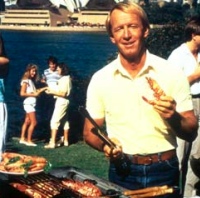 ding our leading and arguably only great living novelist, Peter Carey.
ding our leading and arguably only great living novelist, Peter Carey.
This meandering introduction is to set the scene for a review of four books whose common thread is somewhat self-indulgent. Ellroy, McCabe and Roth and Mr Carey. Just before Christmas I deviated from my pattern of second-hand booksellers to a retailer of new volumes in Bondi. Fancy that four of my favourite living authors all had prominently displayed works, all recently released (2009) and all quite unknown to me who does not read much literary press. I bought all four on spec despite the normal resistance to hardback and my opinions and advice about these works is set out within this article, understanding of course that all readers will not necessarily have the same familiarity with all these authors as I do or indeed know much at all about one or two of them.
I will I hope leave you better armed for your next trip to the bookshop without repeating the inanity that is the plot summary so often offered in reviews of fiction and film. I will leave to the author the decision as to which information is revealed to you and in which sequence and context. I hope that fact will be some counterbalance to the otherwise self-oriented selection.
If you are not familiar with James Ellroy then the most readily available context I can give you is that he wrote the book LA Confidential, the film of which saw Guy Pearce and Russell Crowe raise their Hollywood stocks considerably. He is widely regarded as THE crime writer of this era, though perhaps more by people like myself who are not habitually readers of crime.
It has been noted before that most novels are poorly served by reduction to a 90 or even a 120 or 150 minute film. Leaving aside that the language of the author—the main distinction of good writing-- is almost always lost, the plots where complex are often simplified to the point where they too lose their horsepower. Had the makers of LA Confidential genuinely attempted to capture the book they would have made a mini-series: perhaps not even so mini. Ellroy puts so much detail in to each page and every character is animated by obvious and by less obvious motives. As his language becomes minimalist the motives and plot become tangled beyond recognition from most angles. The point being that if all you know of Ellroy is that 1995 film then consider yourself an outsider.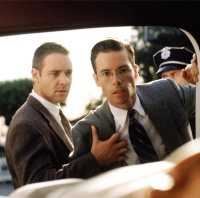
You may note that he writes a blend of fiction and factual contexts and settings, that invariably the different law enforcement agencies in and around Los Angeles will be prominent and will provide at least a main character, perhaps the main character, and that almost everyone is motivated by greed, lust or both but that the specific directions of their lust and greed are less certain.
You may not know that his 2009 work, Blood’s A Rover, is the third in a trilogy: American Tabloid (1995) and The Cold Six Thousand (2001) preceded it. These two deal respectively with real and imagined characters involved for about five years before and five years after the assassination of President Kennedy. Obviously Ellroy’s books posit an alternative to the lone assassin Oswald but the author has not taken the bogus position of Oliver Stone in allowing people to actually think that his plots are in any way a suggestion of the truth. This is fiction boys and girls.
Both these first two books are extremely enjoyable for readers who can stomach violence and the near total absence of guys in white hats. The books offer a series of shades of black and grey at best. One imagines his readers are almost all male and basic dinner party market research endorses this theory. They also require a basic knowledge of late 20th century USA; Castro, the Kennedys junior and senior, the Rat Pack, Bay of Pigs, Batista, Giancana, Howard Hughes, J E Hoover—Ellroy presumes we know something about all of them. He deals with the interface of figures in pop culture with those in crime and in politics. He makes no distinction between these fields and apparently believes there is none.
There is no real reason to read Blood’s A Rover without first reading Tabloid and Six Thousand. Blood’s A Rover does start with a revision of where he left us 8 years ago but the first two establish the plot, they establish the extreme style which exists in these books only and not so much in his other works and perhaps most crucially they establish the sole motive to read this last novel.
Each book runs about 600 pages but with the micro-sentences and idiosyncratic insider shorthand they are long reads and tiring. They are also not without comedy though there is way more death and violence than anything else. Why does Ellroy start every word with K instead of C for a page or so after alluding to the Ku Klux Klan? It is komic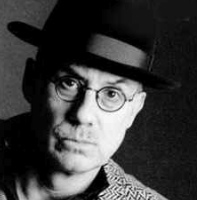 no doubt and he does it konsistently. Further he more than cheekily uses the racism of his characters in his own text. A Lincoon Coonvertible indeed. Who else could get away with car specific racial epithets?
no doubt and he does it konsistently. Further he more than cheekily uses the racism of his characters in his own text. A Lincoon Coonvertible indeed. Who else could get away with car specific racial epithets?
Blood’s A Rover is set in LA, Vegas, the Dominican Republic, Haiti and various examples of Shitsville USA . It is the Nixon era. It is uniquely Ellroy and those who have read the preceding two novels will not likely listen to any recommendation to avoid it. It does seem pale in comparison to its predecessors but I am happier having knocked it over. The earlier books demanded my loyalty to the author and it has been repaid-- but only just. I personally had trouble divining the motives of different characters and so the plot became a little obscured. The lead characters seem no more fleshed out than the cameos despite masses of pages of soliloquy courtesy of every one seeming to keep intimate diaries.
Ellroy can still shock and awe though and he had me engaged most of the time. It should be enough to note that the trilogy has been completed, that it contained two masterworks and took an established talent to a new level and a style seen nowhere before. As a reminder of the first two books, this one does enough. Read it, but do your homework. I envy you your homework.
To Philip Roth’s 30th book, The Humbling. My handwritten note in the front cover says I read this in a day or so on the Central Coast of NSW just after Christmas. Four weeks ago. I cannot remember what it was about. I could speculate that it deals with an old Jewish bloke having sex with a younger gentile and as I flick through the pages now I find I am correct. Other stuff happens of course but this is the essence of it and for whatever reason Roth continues to describe sex in detail, normally unveiling to his reader a practice, an exchange, a physical approach which he (and, ideally we!) find novel or confronting. I feel certain he wants to tell us all that blokes his age can still do it and I hope he is right. He also wants to know that he hasn’t stopped innovating. This may be true in his bedroom but it is not true at his keyboard.
I have read almost all of Rot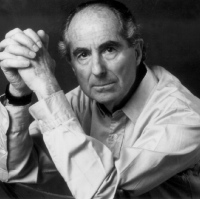 h’s books. Not all of them are about old Jewish men having sex with younger gentile women but more than a few are. Some years back I shared with Cud readers my thoughts on Roth’s The Plot Against America, a book which like an Ellroy combines imagined plot with real life figures; in this case, aviator Lindbergh, New York mayor La Guardia and broadcaster Walter Winchell. It was a very good book. I noted then it was not one of his greats. I Married a Communist was great. American Pastoral was better than great. Sabbath’s Theatre was a level above these two. The Humbling is recognizably Roth but has little else to commend it other than its brevity.
h’s books. Not all of them are about old Jewish men having sex with younger gentile women but more than a few are. Some years back I shared with Cud readers my thoughts on Roth’s The Plot Against America, a book which like an Ellroy combines imagined plot with real life figures; in this case, aviator Lindbergh, New York mayor La Guardia and broadcaster Walter Winchell. It was a very good book. I noted then it was not one of his greats. I Married a Communist was great. American Pastoral was better than great. Sabbath’s Theatre was a level above these two. The Humbling is recognizably Roth but has little else to commend it other than its brevity.
Since I am not recommending this book to anyone I will imitate Roth’s brevity and say look elsewhere for the best of this remarkable writer. If you have the collector's urge to finish the set you can always come back to this in the specials bins and save yourself some dollars. It may sell well but an unknown writer may not have had it published.
As hard as I try I cannot link the unveiling of the bronze Stan McCabe at the Sydney Cricket Ground on January 3rd to the fact that I finished the book, The Holy City, by Patrick McCabe just a few days earlier. Suffice to say that McCabes generally are Irishmen of Scots origin but that that origin is distant by some centuries, indeed by time some multiples of the age of English speaking Australia.
It has been noted by someone cleverer (or more glib) than me that in the context of modern Irish writing, that if Roddy Doyle is the Beatles, then Patrick McCabe is the Rolling Stones. Doyle is accessible to all, his earlier works (The Commitments, The Van) deceptively simple and he has let us all in on his progression from a yarn-spinner with an ear for North Dublin dialogue to a chronicler of broader, sometimes darker and historically themed books like Paddy Clarke, Ha Ha Ha and A Star Called Henry, itself the first of a sequel now two parts complete. If he would be as welcome in your front room as Paul McCartney then Patrick McCabe courting your daughter would be, well potentially Jaggeresque or worse.
In the Dublin patois Patrick McCabe’s books are feckin’ mental. So are all the protagonists in that majority of his eleven books which I have read. He puts us inside the head of people who are slightly unhinged as they make the journey to 100 percent hinge-free oblivion. Whether worn down by their own bleak upbringing, by rural isolation, by marital breakup or by the inability to deal with the Irish transition from a Catholic monoculture to a more liberated but far less certain nation, Patrick McCabe’s characters head down a path which hopefully none of us will know any better than his conveying thereof. One wonders whence he derived this internal Inferno but one fears the answer.
marital breakup or by the inability to deal with the Irish transition from a Catholic monoculture to a more liberated but far less certain nation, Patrick McCabe’s characters head down a path which hopefully none of us will know any better than his conveying thereof. One wonders whence he derived this internal Inferno but one fears the answer.
He is undoubtedly a talent. Like Doyle he has an ear for the speech patterns of his home country and to those of us who have spent time there it rings true. Suffice to say that to those who have not, there will be unfamiliar phrasing and opaque dialect. It would not be possible to be accessible to all and to keep the authenticity without the use of footnotes but then Patrick McCabe may not be writing for you. He may not be writing for me. He certainly isn’t writing to win awards though he does this very often. His art is quite lacking in commercial imperative but it is not self-indulgent. This is not the polystyrene installation of the world of writing. It is as layered and as confronting as a Goya.
The Holy City will and should be read by McCabe fans but again I struggle to recommend it to those unfamiliar with gems like Breakfast on Pluto (brilliantly filmed by Neil Jordan with the compelling acting of Cillian Murphy and Liam Neeson), with The Butcher Boy in which McCabe prefigures Cormac McCarthy’s use of an abattoir stungun as a weapon in No Country for Old Men, with The Dead School which could be his best, and with Winterwood which is about as dark as any book needs to be but as engaging as well.
So I find myself endorsing authors if not their 2009 works. Until now. On Australia Day.
Peter Carey’s Parrot and Olivier in America could not have been written by anyone else. That is an observation equally accurate in relation to Theft—a Love Story, or My Life as a Fake which have his unique language and his plotlines where often no fortune is at stake, no romance, no war, no life , no personal realization or goal. What is at stake in these works is only Art.
While no one else could have written those other recent works, that does not make them great in the way that the Booker committee decided that True History of the Kelly Gang was great and Oscar and Lucinda was great. And that does not make them as delightful as his Dickensian tangent, Jack Maggs or the extraordinary yarn (and homage to yarnspinning) that is Illywhacker.
Those of you swooning at the recollection of those works should smile now because Parrot and Oliver in America is in my not quite humble opinion great. 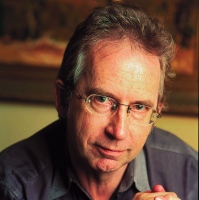
The book is told from the two viewpoints of the title characters. It allows in the case of Olivier de Garmont for Carey to empathetically convey the mindset of the French aristocracy as it confronts its own doom and the concurrent rise of the infant democracy of the USA (At this point some of you will suspect that the work of Alexis de Tocqueville is in the mix. It is as central to the mix as Dickens was in Jack Maggs, which is to say essential). Olivier is mildly or strongly contemptuous of democracy, of work, of change, of Jews, of Protestants, of Americans and of anything remotely egalitarian. Carey though is not contemptuous of Olivier.
The alternative perspective on these same events is from Parrot, who is a mix of an artisan class Brit and a New South Wales colonial (we’re talking 1815 or so here) and indeed could be called a citizen of the world but for the fact that he is not really running his own race in any of his habitats. Parrot may be a tremendous mimic but has a language of his own and it is tremendous:
I was in Broadway and all was business—barrow boys, bankers, whores in a hurry with something on their mind. This was not Paris where you might drift uselessly from place to place, affecting to carry your wit and learning in a conch shell up your bottom. There were no flaneurs on Broadway. They were a hundred percent business and they banged against one another like marbles in a lottery barrel.
This book (it is now the day after Australia Day and I am just 50 pages from the end) is too good to ignore. Prize giving juries should not ignore it. People who set syllabuses should not ignore it. People who love language should not ignore it. People who love stories well told should not ignore it. People who aspire to write should get to it immediately: It is more than good enough to inspire but also to intimidate, so beware. 
If you find Australia Day no better than any other for beer based activity, if you do not feel especially flag wavy, if you are not drawn to marking constellations on your skin or taunting foreigners then perhaps you can reflect that we speak English because on 26 January 1788, Captain Arthur Philip, RN, planted a flag at Sydney Cove and decided on a permanent British presence and therefore the presence of the English language which evolved in a certain way like a child unsupervised by its parent.
The Australian language to the extent that it exists separately does not have the regional or class variety of the British scene. An Australian after a little time spent in the UK can notice differences within London and perhaps identify a Brummie, Geordie, Cornishman, Mancunian or Scouser. A modern Henry Higgins though might often mistake the wealth or education of a speaker he met in Australia. There are however as in all things elevated and degraded versions of Australian and Carey is at the very top end. He collects colloquialisms like a bower bird or a lyre or indeed a parrot and he invents a few of his own which deserve widespread currency. He has access to the language of the tradesman’s apprentice but he paints word pictures which are of the highest art. His latest book is a fine example and a delight to read and to recommend.
